14 Small Front Yard Landscaping Ideas With Huge Curb Appeal
Transform your small front yard into a charming oasis with design ideas that maximize space, enhance curb appeal, and bring nature closer to your doorstep.
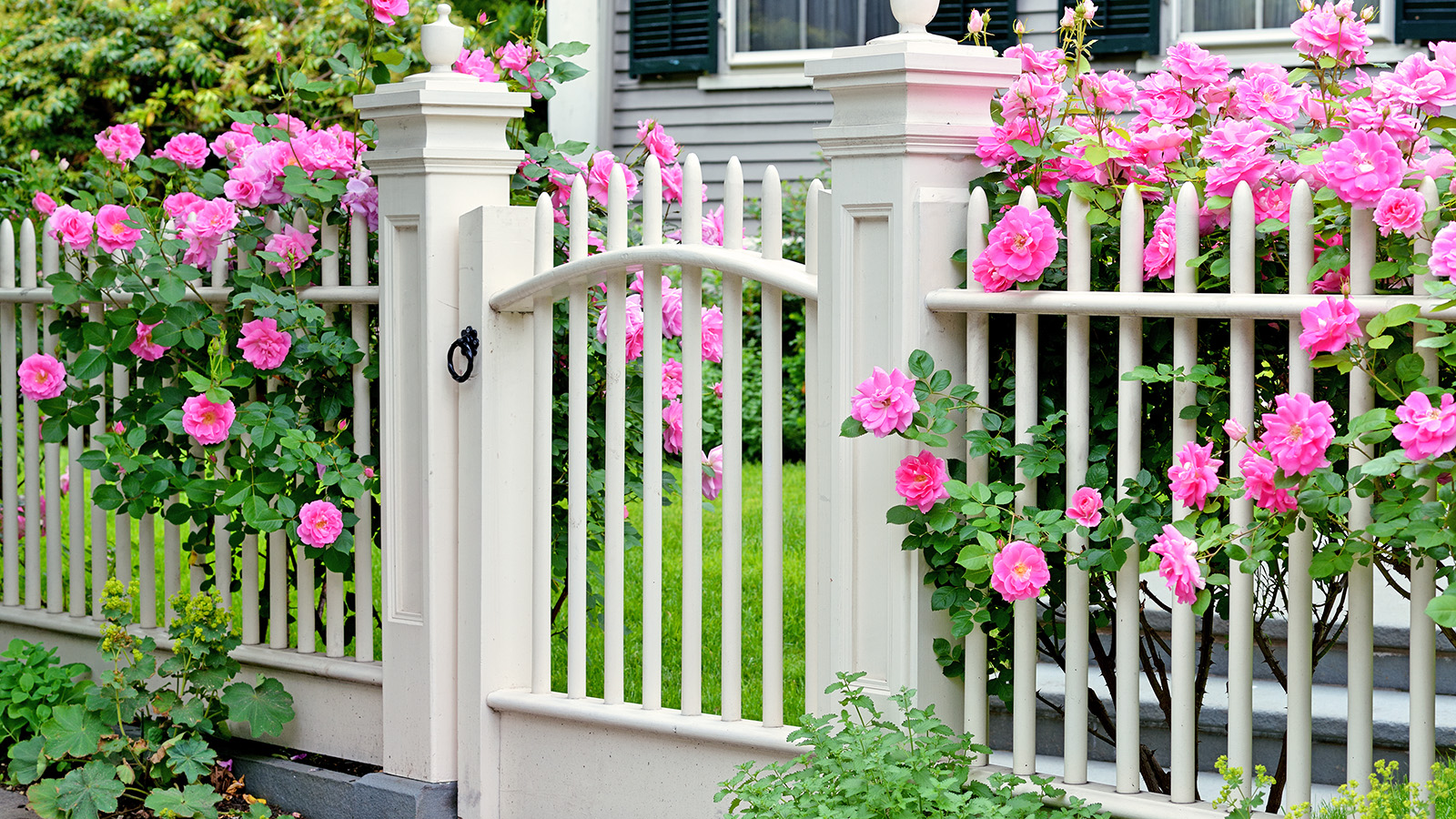
- 1. Choose Beautiful Low-Maintenance Plants
- 2. Plant a Delicious Fruit Tree
- 3. Highlight the Entrance with Statement Planters
- 4. Set the Scent with a Fragrant Flowering Hedge
- 5. Keep it Coherent with a Color-Themed Border
- 6. Prioritize Long-Flowering Perennials
- 7. Add Drama and Softness with Ornamental Grass
- 8. Train Climbing Plants up the Front of the House
- 9. Grow Edibles in a Raised Planter
- 10. Choose Flowering Plants for Privacy
- 11. Uplift the Facade with Window Boxes
- 12. Lose the Lawn
- 13. Plant a Four-Season Tree
- 14. Add Seating Out Front

There’s something wonderfully satisfying about stepping outside of your front door and being greeted by a burst of greenery and fragrant blooms, no matter how small the space. Thoughtful front yard landscaping will bring immense joy and create a welcoming approach to a house that boosts curb appeal and even adds value.
The best small front yard landscaping ideas can create an intimate and personal garden space. But designing a small garden comes with its own set of challenges.
One of the first considerations is the mature size of your chosen plants. Don’t go on how they look at the garden center – think about how large they’ll grow in the years to come. Oversized plants can quickly dominate a small space, blocking light from windows and crowding out other plants.
Privacy is another key concern in small front yards, especially if your home is close to the street or neighboring properties. Selecting the right plants can help create a natural privacy screen, offering seclusion without sacrificing the lush look of your garden.
Additionally, choosing plants that are suitable for your USDA hardiness zone, light levels, and soil type is crucial for long-term success. The right plants will thrive with minimal care, rewarding you with a front yard that’s not only beautiful but also resilient, reflecting the unique character of your home and the local environment.
These small front yard landscaping ideas are suitable for all home styles and can be tailored to suit any budget.
1. Choose Beautiful Low-Maintenance Plants
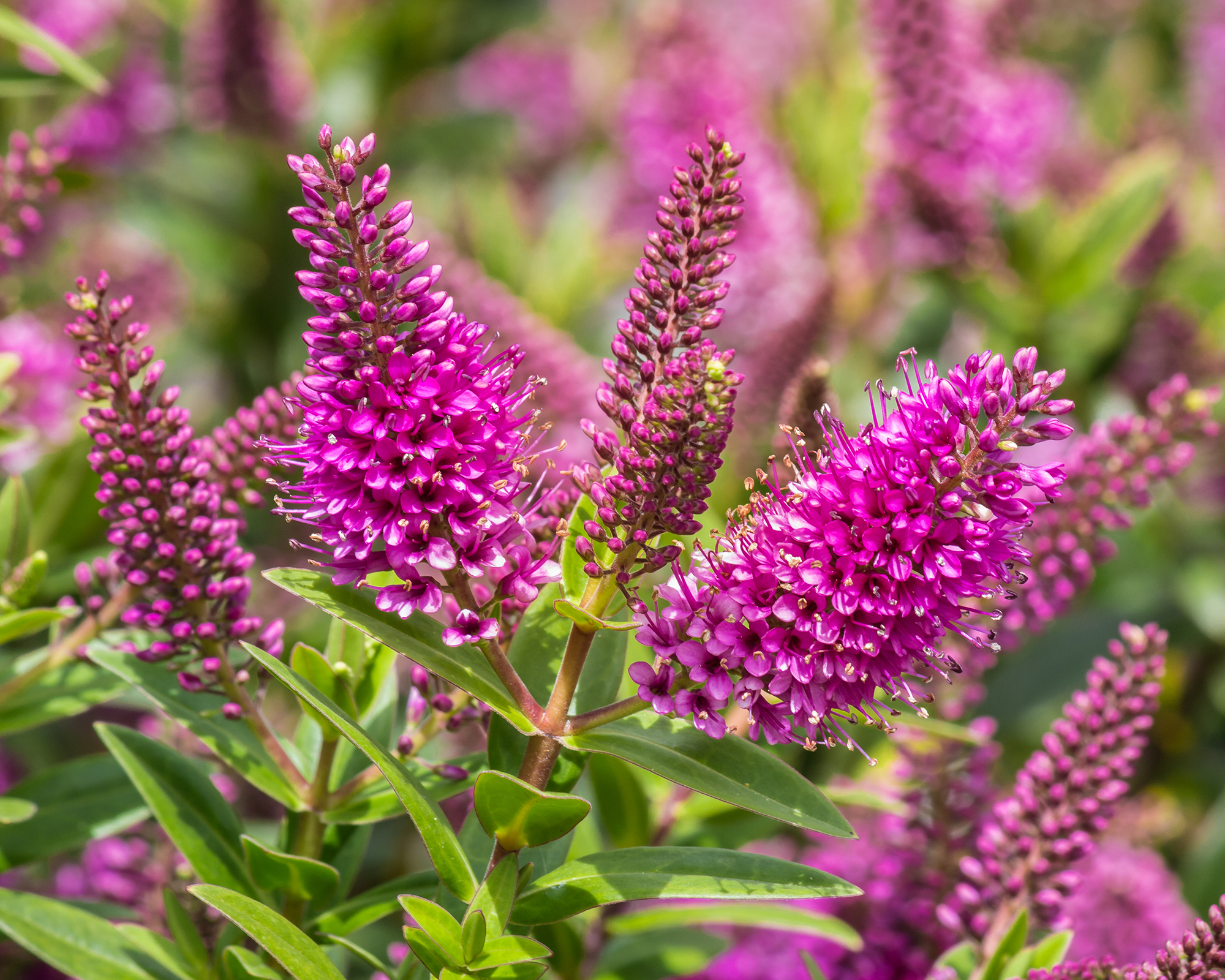
Low-maintenance plants for front yards are a good idea if you don't want to spend a lot of time out front gardening. However, minimal effort can result in maximum appeal if you choose the right plants.
Gardening tips, videos, info and more delivered right to your inbox!
Sign up for the Gardening Know How newsletter today and receive a free copy of our e-book "How to Grow Delicious Tomatoes".
Ever-popular hydrangeas are bursting with curb appeal and are simple to maintain, needing only an annual prune. They are an ideal choice for front yards and are almost universally admired.
Other options include hebe, a pretty evergreen shrub that requires almost no effort to maintain; Chinese fringe shrub, which packs a punch with aromatic flowers in spring and requires only an occasional trim; and beautiful daylilies, which will keep on blooming all summer with minimal care when planted en masse.
2. Plant a Delicious Fruit Tree
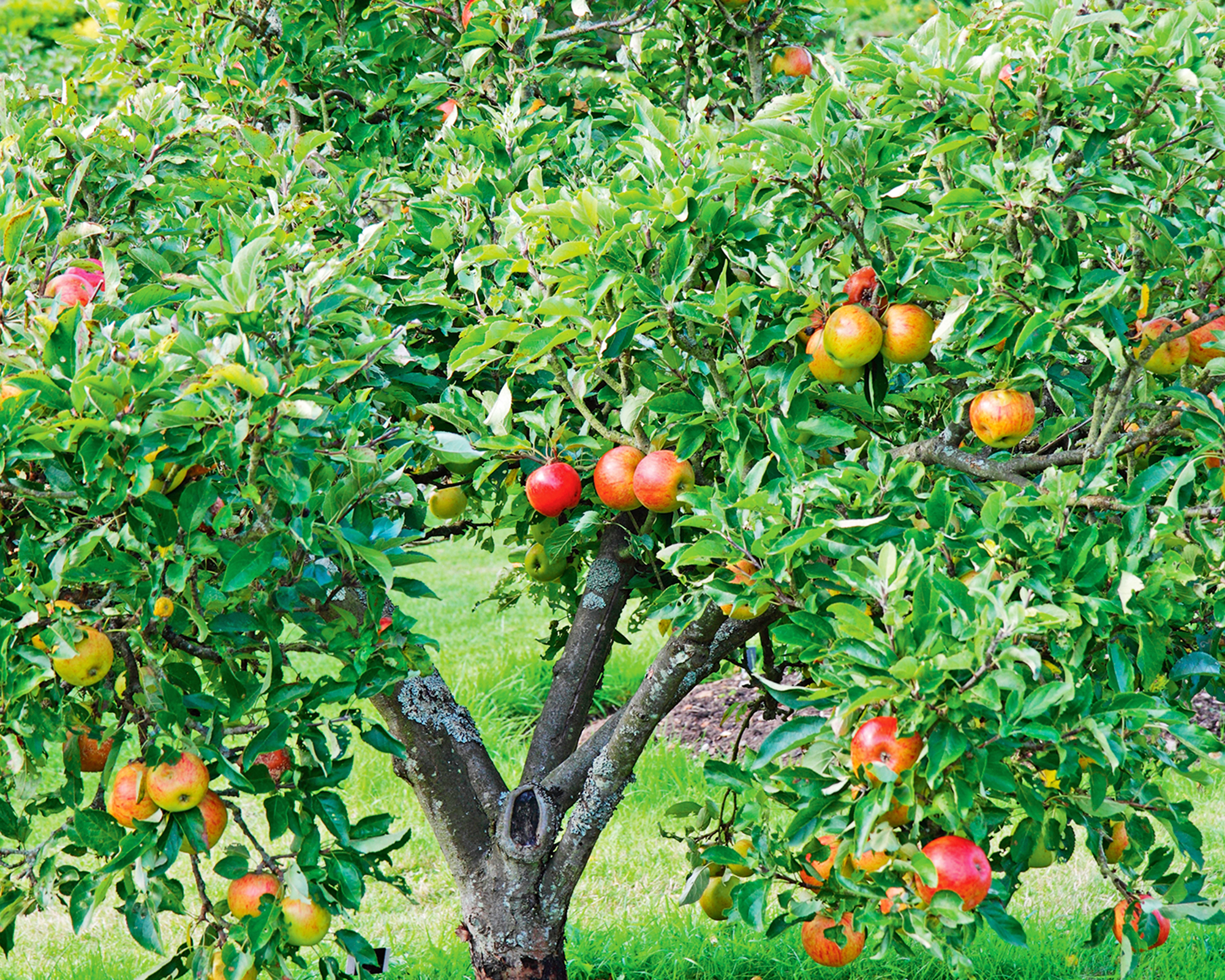
Even the smallest of front yards can accommodate a dwarf tree, and fruit trees are particularly prized for adding curb appeal. What could be lovelier than picking juicy ripe fruit on your way to the front door?
The best fruit trees for front yards are varieties that won’t dominate the front of the house, block light, or create a lot of litter. Many smaller fruit trees will grow no taller than 5-8 feet, while others can be maintained to a compact size by pruning. Ideal options for front yards include dwarf apples, pears, cherries, and figs.
For the ultimate space-saving solution, consider espaliering a fruit tree against a sunny wall. This involves training the tree in an attractive, symmetrical growth habit, which enhances light and air circulation for the fruits. Apples, pears, peaches, and cherries are all good candidates for espaliering.
3. Highlight the Entrance with Statement Planters
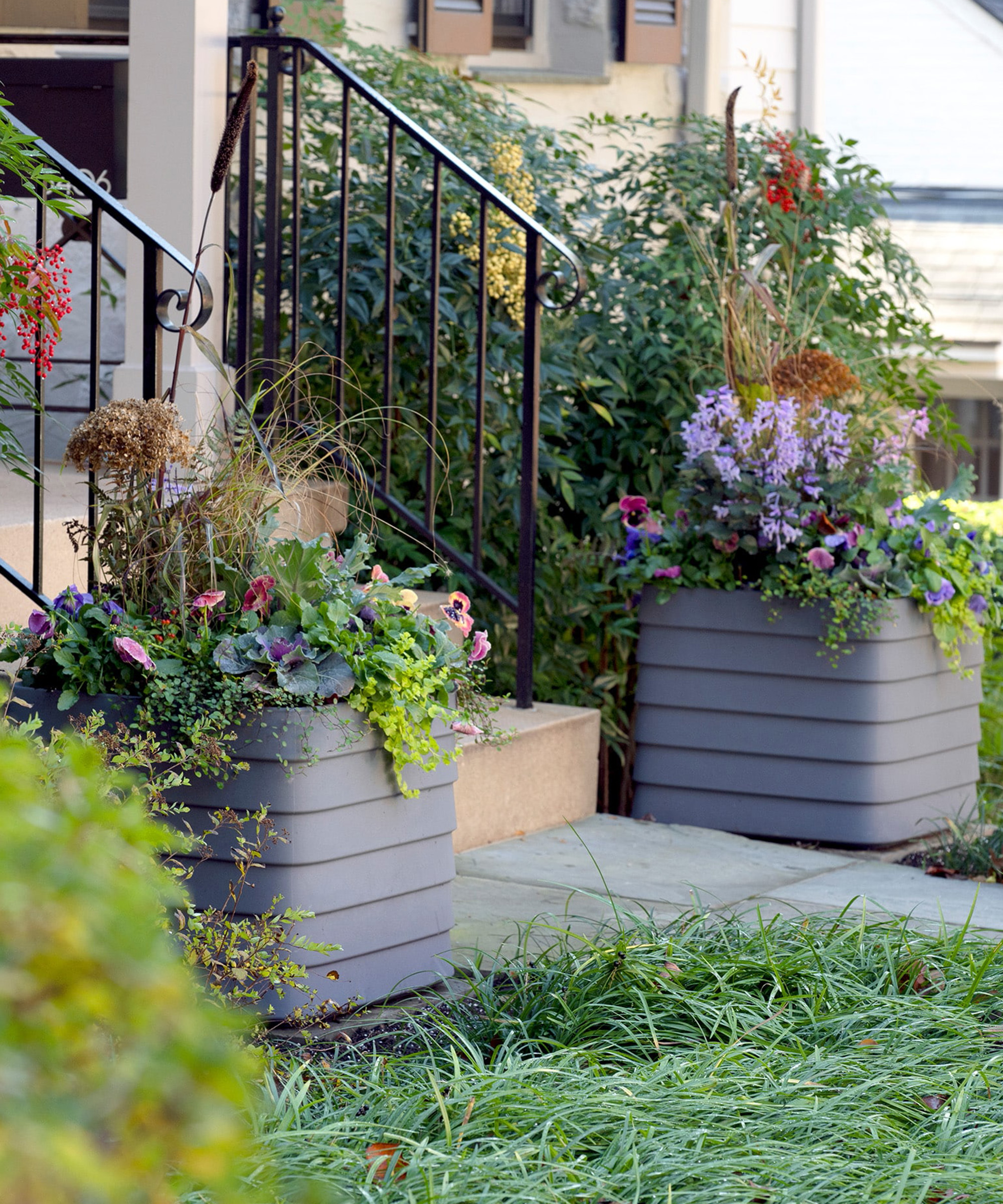
Container gardening is a design staple for small yards, adding so much impact and flexibility. Positioning tall containers on either side of the entrance creates an inviting focal point for a home and adds a pleasing symmetry.
Planting your containers with colorful annuals will ensure a constant burst of flowers, and enables the planting to be regularly updated to reflect every season.
Alternatively, for a year-round solution, plant your containers with reliable evergreens such as aromatic bay trees or sculptural boxwood.
If maintenance is a concern, then invest in self-watering planters that only need occasional topping up. Crescent Garden’s TruDrop Slat self-watering planter boxes, available in the Gardening Know How Shop, feature an internal water store that slowly waters plants, making sure they get just the right level of hydration. The design is reminiscent of traditional wooden slatted planters but has a stylish modern look.
4. Set the Scent with a Fragrant Flowering Hedge
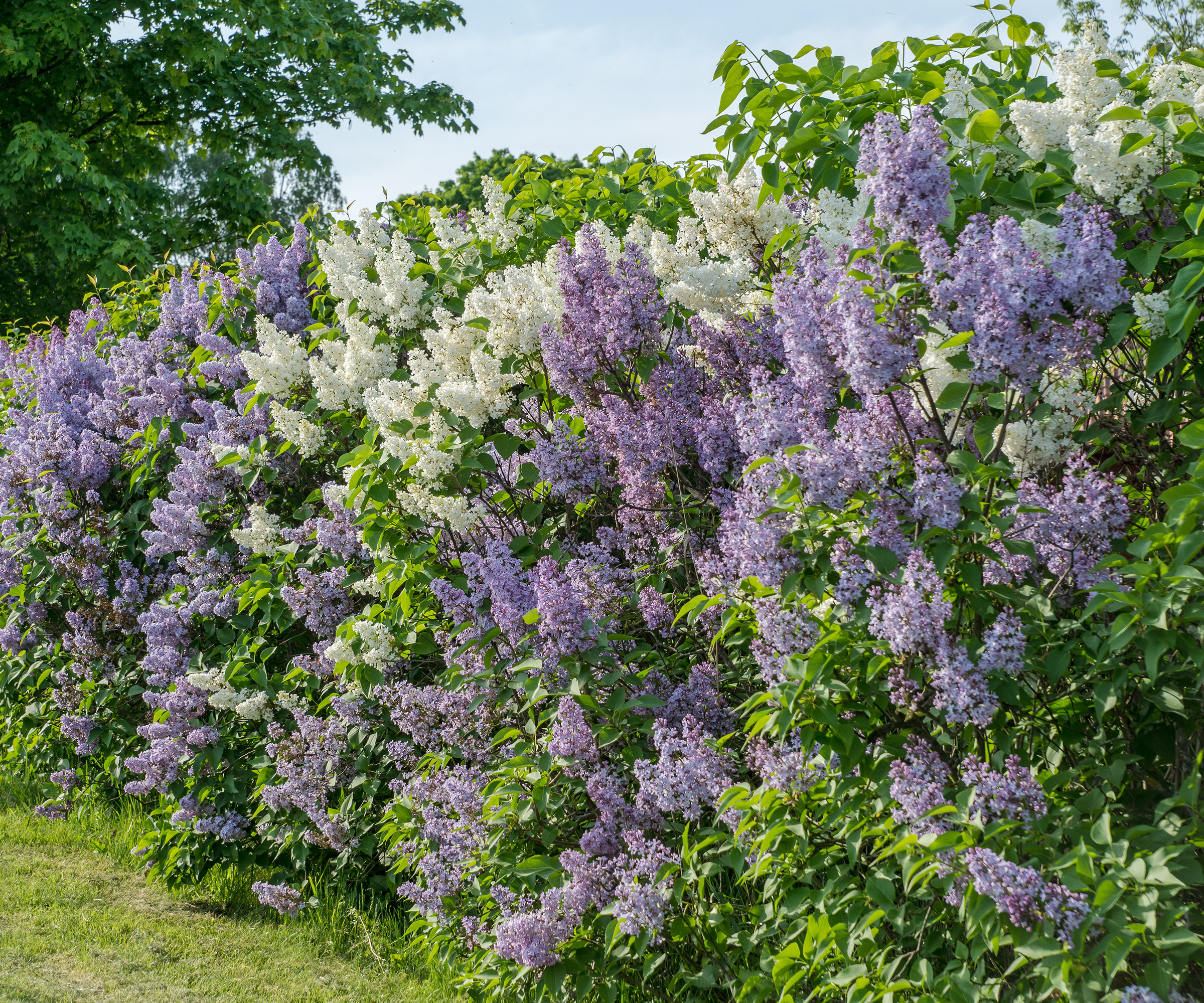
Nothing boosts curb appeal more than a heavenly scent that greets you on arrival. A fragrant flowering hedge is the perfect way to achieve this, as it doubles up as an attractive boundary. Mock orange and lilac are gloriously fragrant choices.
Most flowering hedge plants are deciduous, which means they shed their leaves in the fall. However, this is not necessarily a bad thing for a small front yard, when an established hedge could impinge on light levels in the darkest months.
If you want the permanent boundary of an evergreen hedge, there are a few fragrant flowering options to choose from, including mountain laurel, California lilac, fragrant olive, and winter daphne.
5. Keep it Coherent with a Color-Themed Border
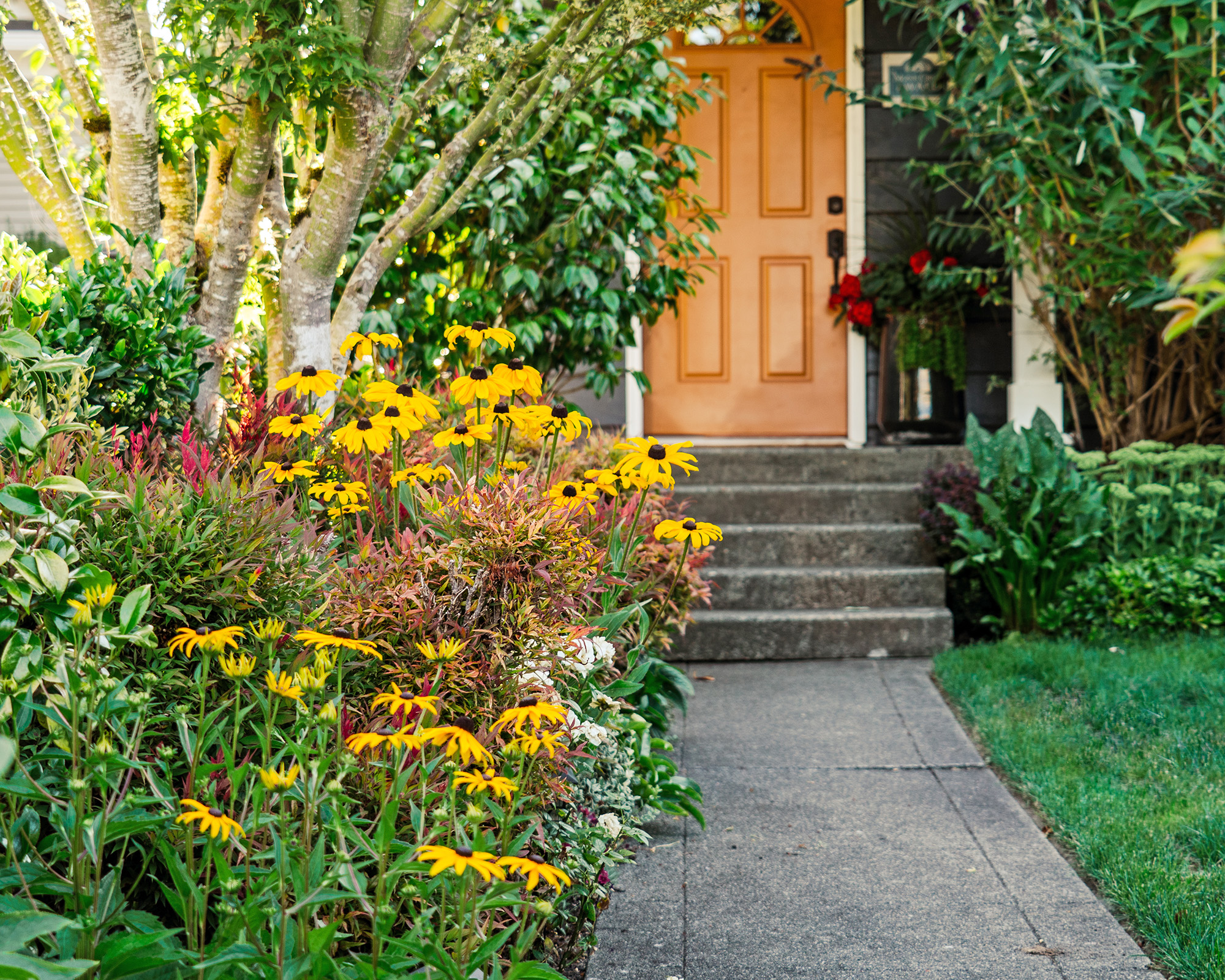
Color is a powerful tool that has a huge influence over the way your home is perceived. In a small front yard, a single-color or complementary palette works really well.
Want to create an air of simple sophistication? Go all white with big ball hydrangeas. Need to warm up a dull house exterior? Add a dose of sunshine with black-eyed Susan and orange daylilies. Crave cottage garden charm? Pair blue delphiniums with magenta lupines and romantic pink roses. As well as flowers, colorful foliage can play a big part.
When planning color in a garden, refer to the color wheel to help choose complementary hues. For example, yellow and purple sit opposite each other and can create a pleasing contrast, while pink, blue, and orange make up a classic triadic color scheme. The trick is to use different tones of each color rather than all strong hues.
Don't just consider the color of plants – a blue front door, for example, can be beautifully contrasted with orange and yellow flowers, or harmonized with lavender.
Make color theming easier by choosing a ready-made border design, such as Plant by Number’s Pink Flower Garden Kit, available in the Gardening Know How Shop. Designed to fit into a 5ft x 7ft space, the kit comes with everything you need to plant a beautiful color themed border, including the planting plan, fabric planting map, and gorgeous plants.
If pink isn’t your style, then check out the brand’s Pastel Tones Garden Kit, Jewel Tones Flower Garden Kit, and Neon Lime Garden Kit.
6. Prioritize Long-Flowering Perennials
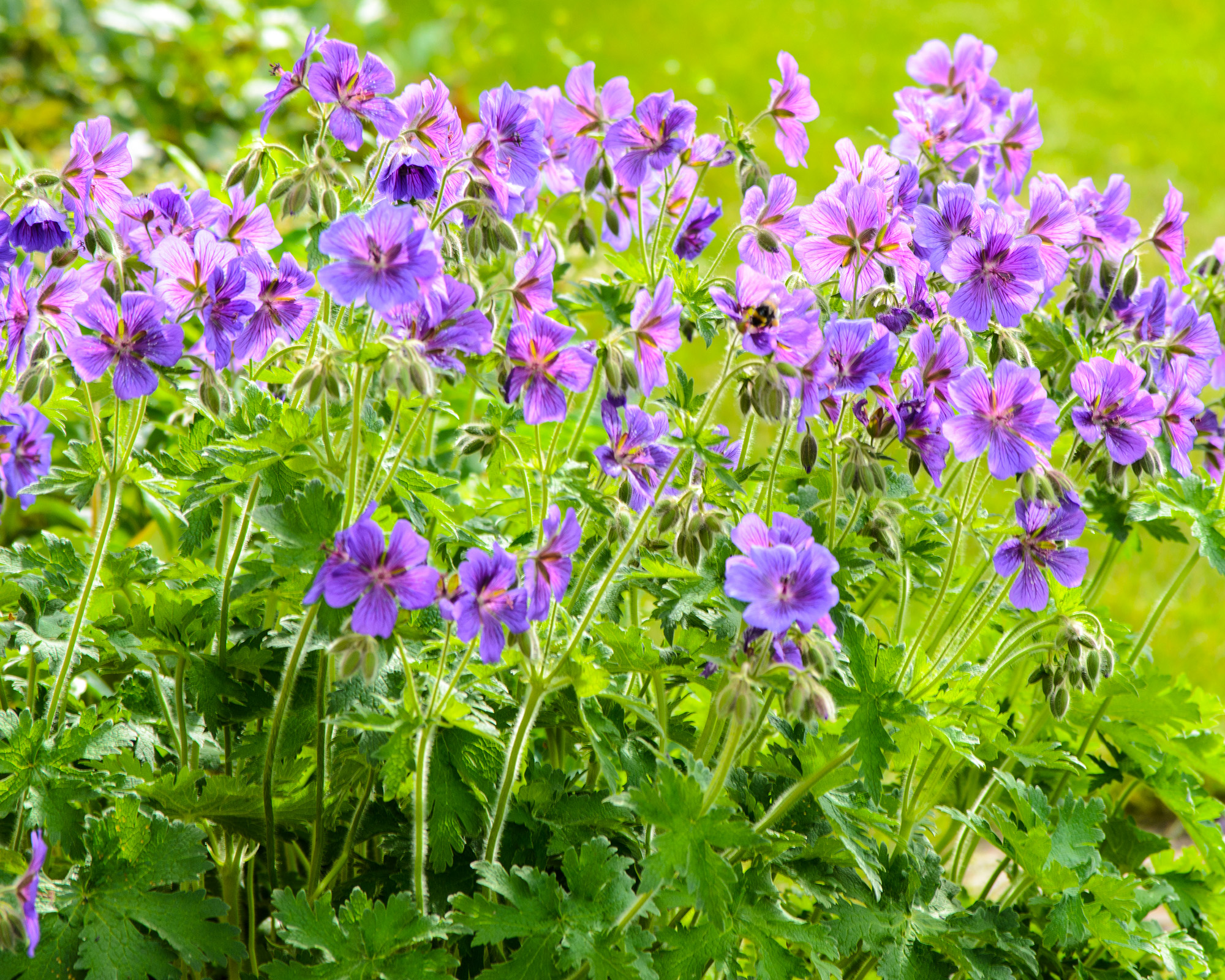
There are numerous front yard plants that will add value to your home, but in a small space you need to be selective and prioritize the longest-flowering perennials that will bloom over two or even three seasons.
With their jewel tones, salvias are a wonderful choice that also have varied growth habits; hardy cranesbill geranium is perfect for lining a pathway; coral bells are a stunning option for shaded areas; while Knock Out roses will bloom from spring to frost, without deadheading.
Choose a mixture for pots, borders, and edging plants, to boost curb appeal and keep your yard in bloom for most of the year.
7. Add Drama and Softness with Ornamental Grass
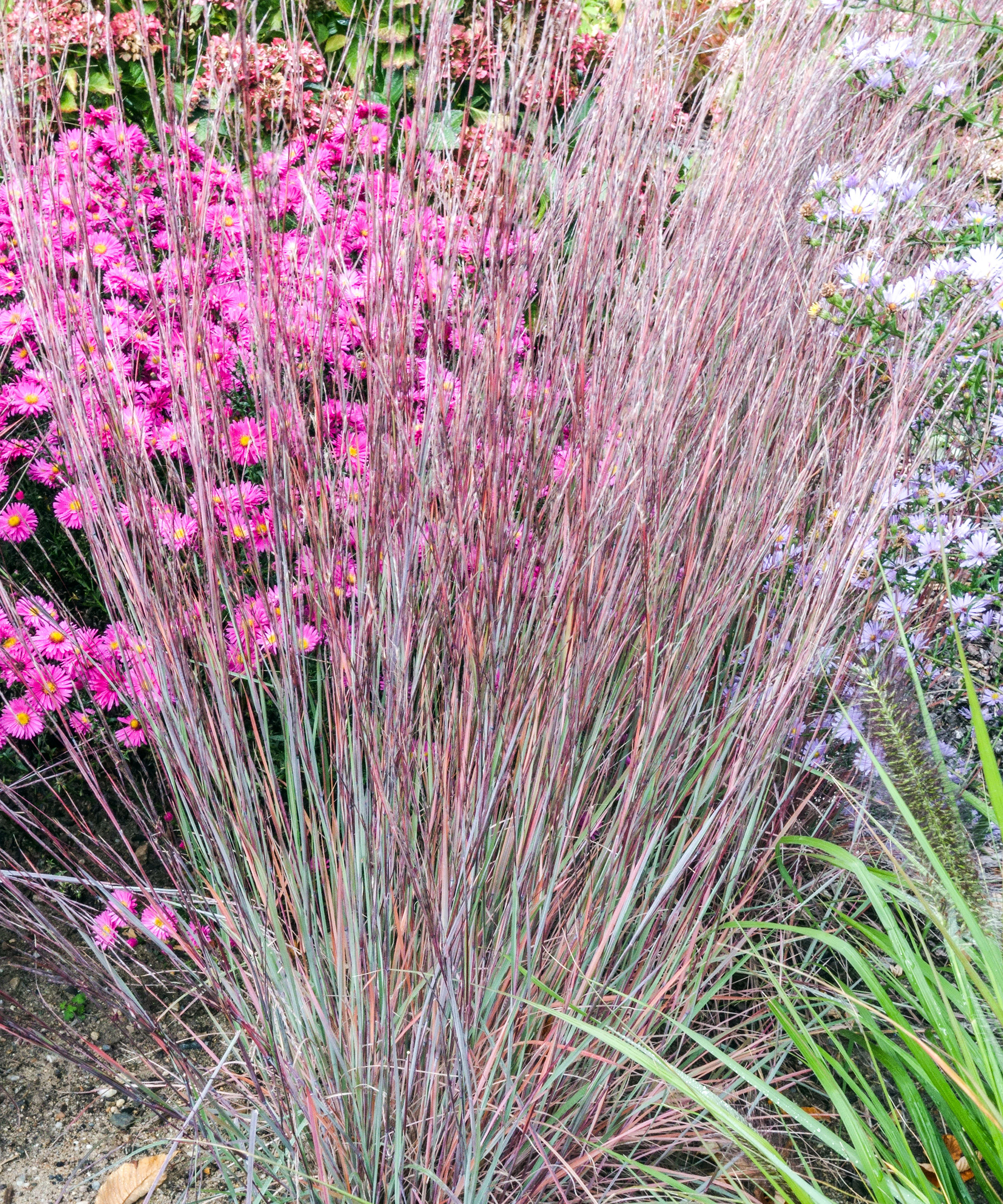
Ornamental grasses are a beautiful landscaping feature for small yards, adding texture, height, and softness. Their graceful, flowing forms add movement and structure to the garden, creating visual interest throughout the year.
There are grasses in various sizes, colors, and textures to suit any design – many of them are low-maintenance and do not suffer from pests and diseases. Yet, they provide habitat and food for wildlife, helping to enhance the biodiversity of a small front yard.
One of the key advantages of ornamental grasses is their adaptability. They thrive in different soil types and can handle varying light conditions, from full sun to partial shade. Once established, they are drought tolerant and require minimal watering.
Many types of ornamental grasses are too large for a small front yard, but there are many dwarf grasses that can be used as focal points, borders, or groundcovers. Try prairie dropseed, monkeygrass, smaller blue fescue varieties, and blue dune lyme grass.
Plant by Number’s Ornamental Grass Garden Kit, available in the Gardening Know How Shop, is a ready-made border designed for small yards, measuring 7ft x 5ft. Offering a mix of tall elegant grasses and groundcovers, it would look beautiful planted in front of a porch or against a boundary fence.
8. Train Climbing Plants up the Front of the House
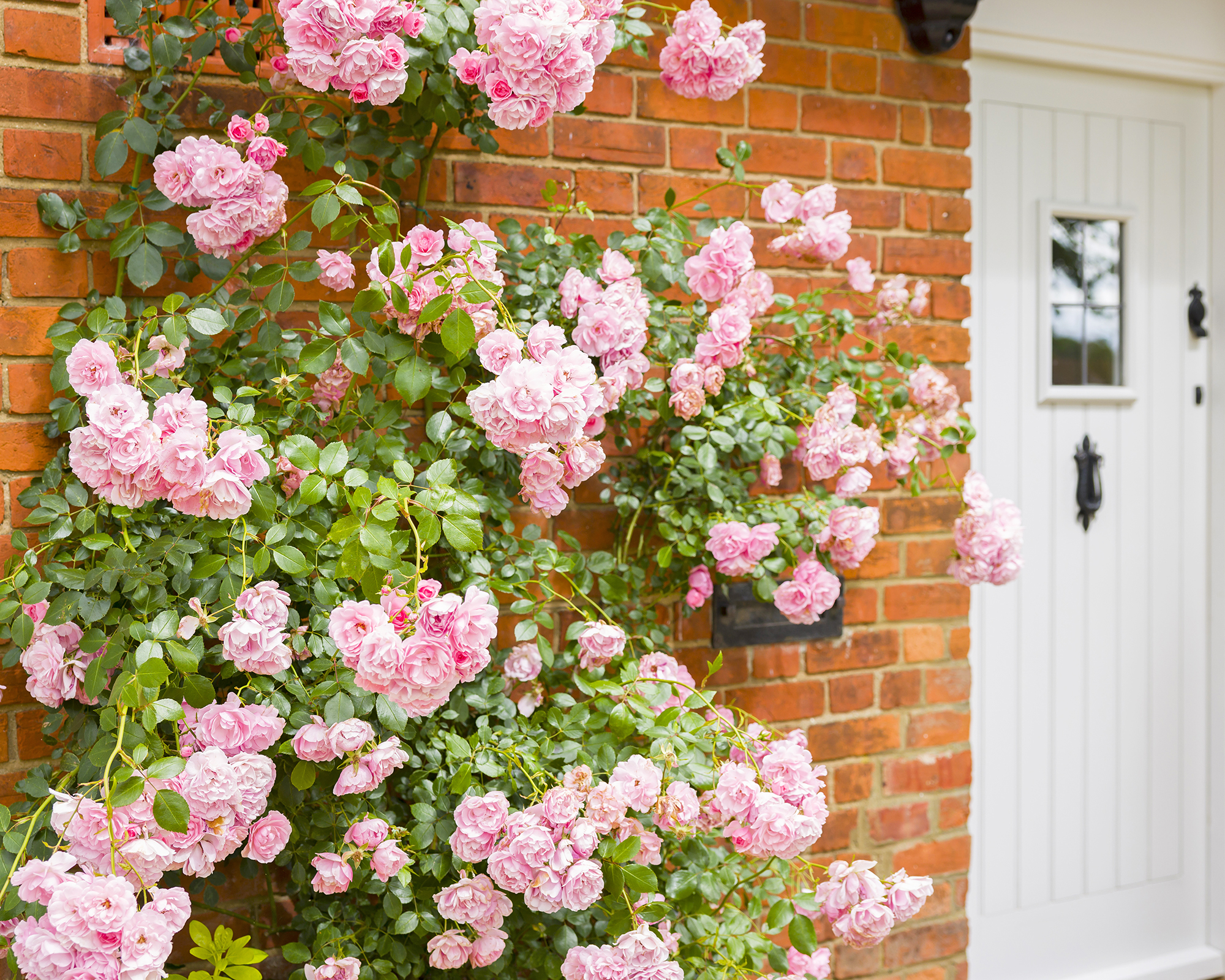
Climbing plants are versatile additions to a front yard that can be used to disguise and soften an unattractive or drab wall, or to complement a charming exterior.
Many flowering vines with an extended bloom season, such as clematis, also have a heavenly scent that will uplift visitors and occupants alike; climbing roses are a beautiful choice brimming with old-fashioned charm; climbing hydrangeas add impact with their large white flower heads; while vibrant mandevilla adds a tropical touch in warmer USDA zones.
English ivy offers a high level of coverage; however, it can be invasive and in some cases cause damage to the house’s facade.
Most climbing plants will need some support – either hidden wires or a trellis for lower-growing climbers.
9. Grow Edibles in a Raised Planter
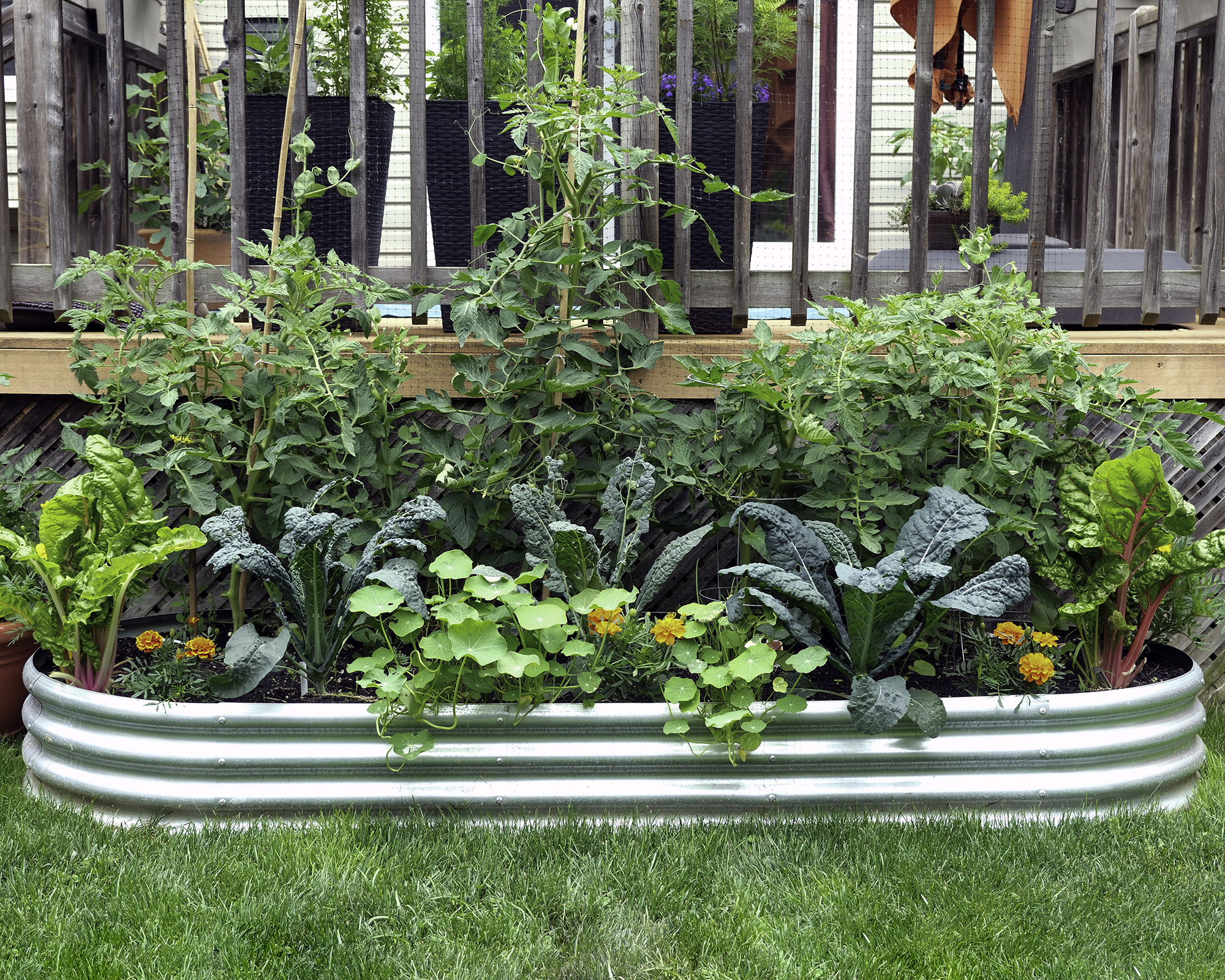
Vegetable gardens are not just for backyards – they can become an integral part of a front yard. This is especially worth considering if your backyard is too shaded to grow your own food.
If you want to maintain curb appeal, then choose ornamental edibles – known as edimentals – and combine them with flowering plants.
There are many beautiful herbs that belong in flower beds, such as chives, sage, and lavender. Ornamental vegetables include artichokes, which feature striking architectural heads; scarlet runner beans with their vibrant flowers; and even leafy greens, which come in a variety of colors and textures – rainbow chard looks particularly stunning in a mixed bed.
Invest in a raised metal planter to contain your vegetable garden and create a stylish feature. Mix in some beautiful companion flowers, such as marigolds and nasturtiums, to help manage pests.
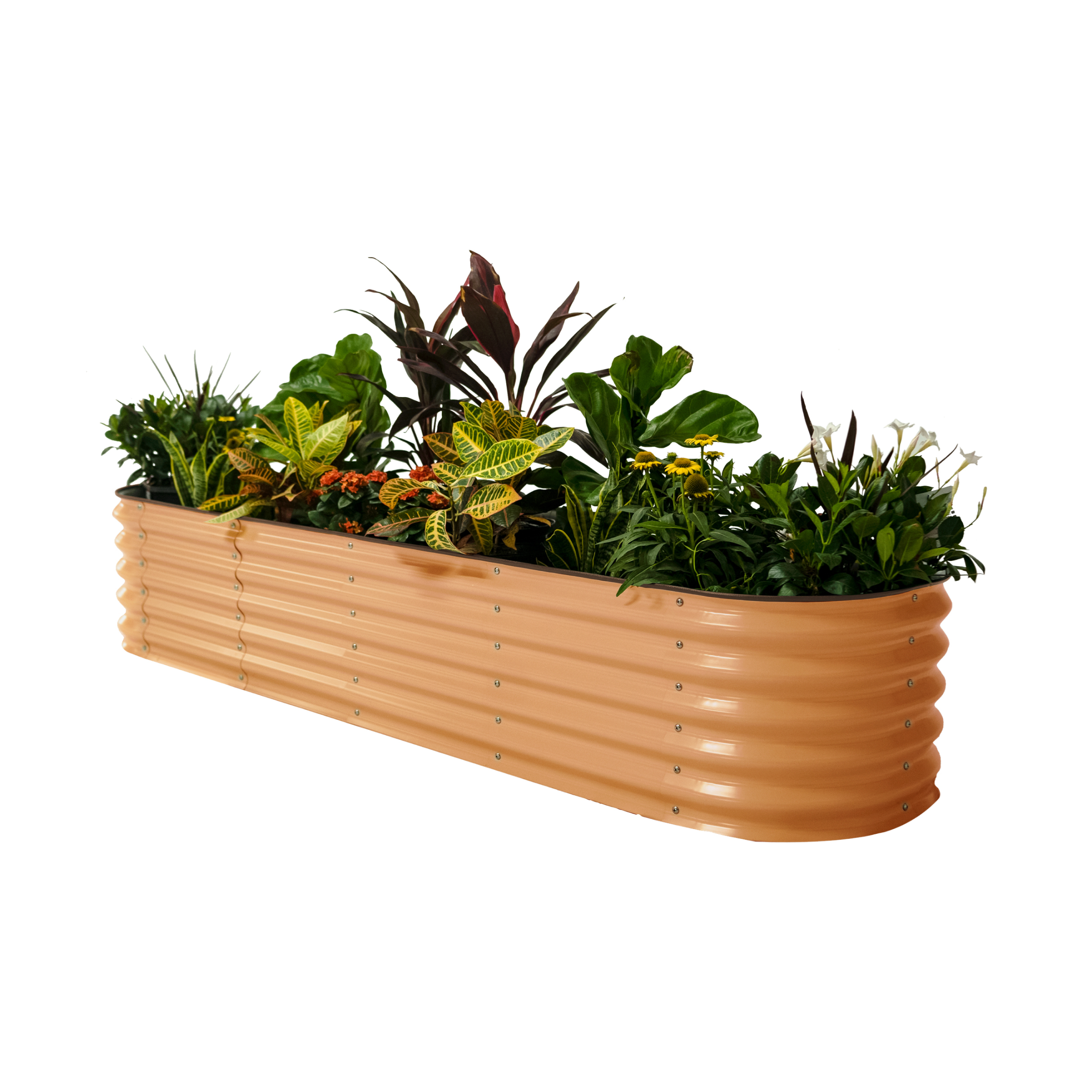
Vego's 17" tall metal raised garden bed has a long, slender profile (8ft x 2ft) that makes it perfect for positioning in front of a porch or along a boundary fence.
10. Choose Flowering Plants for Privacy
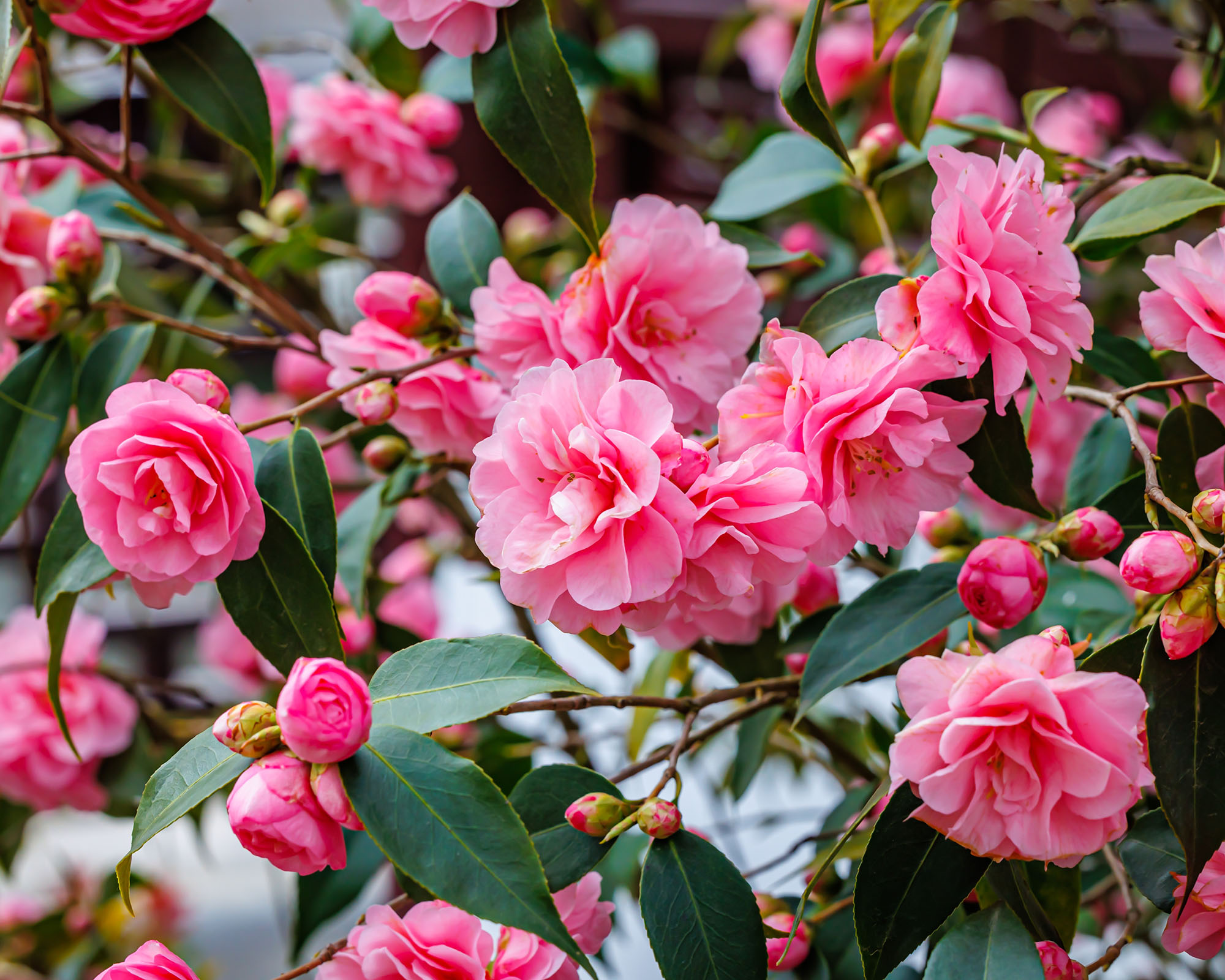
Privacy is often a concern in a small front yard. While a tall boundary hedge may be too imposing, a couple of carefully positioned privacy plants can obscure the view into a front window or even create a secluded seating area.
Camellia is a fabulous evergreen shrub with dark, glossy leaves that flowers in spring – or even winter in some areas; oakleaf hydrangea provides good privacy from spring through fall with beautiful white flowers; bougainvillea is a colorful flowering vine for warmer zones; while hardy hibiscus continuously produces large, vibrant flowers over a long period.
While fast-growing shrubs for privacy are tempting if you want plants to be established quickly, they can soon overwhelm a smaller yard, so always check the mature planting size.
11. Uplift the Facade with Window Boxes
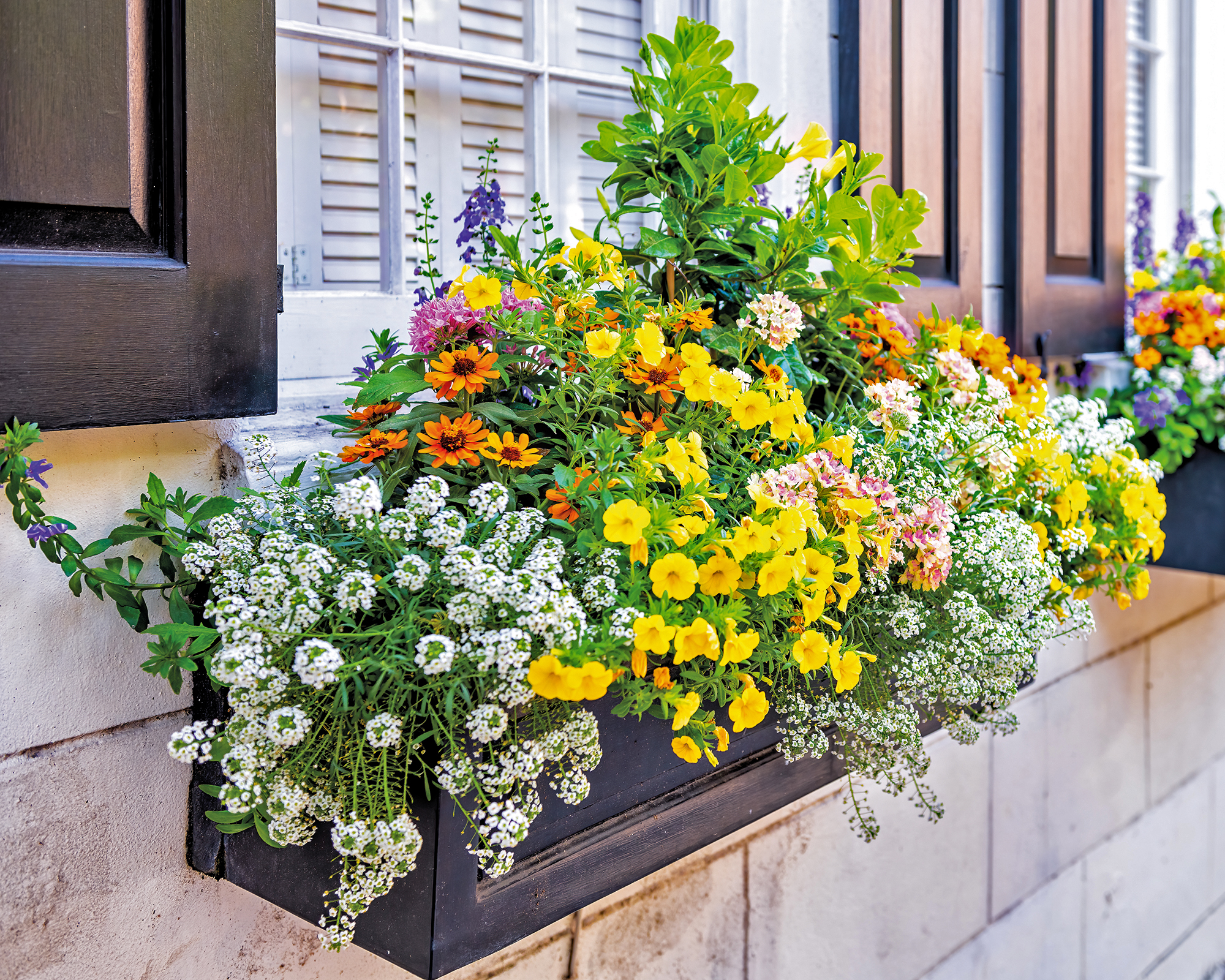
Window boxes are the ultimate space-saving small front yard idea – even homes without front yards can usually accommodate one. These vertical containers can be mounted directly below windows, transforming a home’s exterior with vibrant color and lush foliage.
As well as adding an appealing focal point to a house’s exterior, window boxes are a clever landscaping trick, as they draw the eye upward, which helps to enhance the perceived size of the front yard.
Like any container, window boxes can be changed out seasonally to always be in bloom, or they can be planted with evergreens to provide year-round structure. They can even provide an extension to your edible garden to include herbs and leafy greens – an ideal solution for kitchen windows.
12. Lose the Lawn
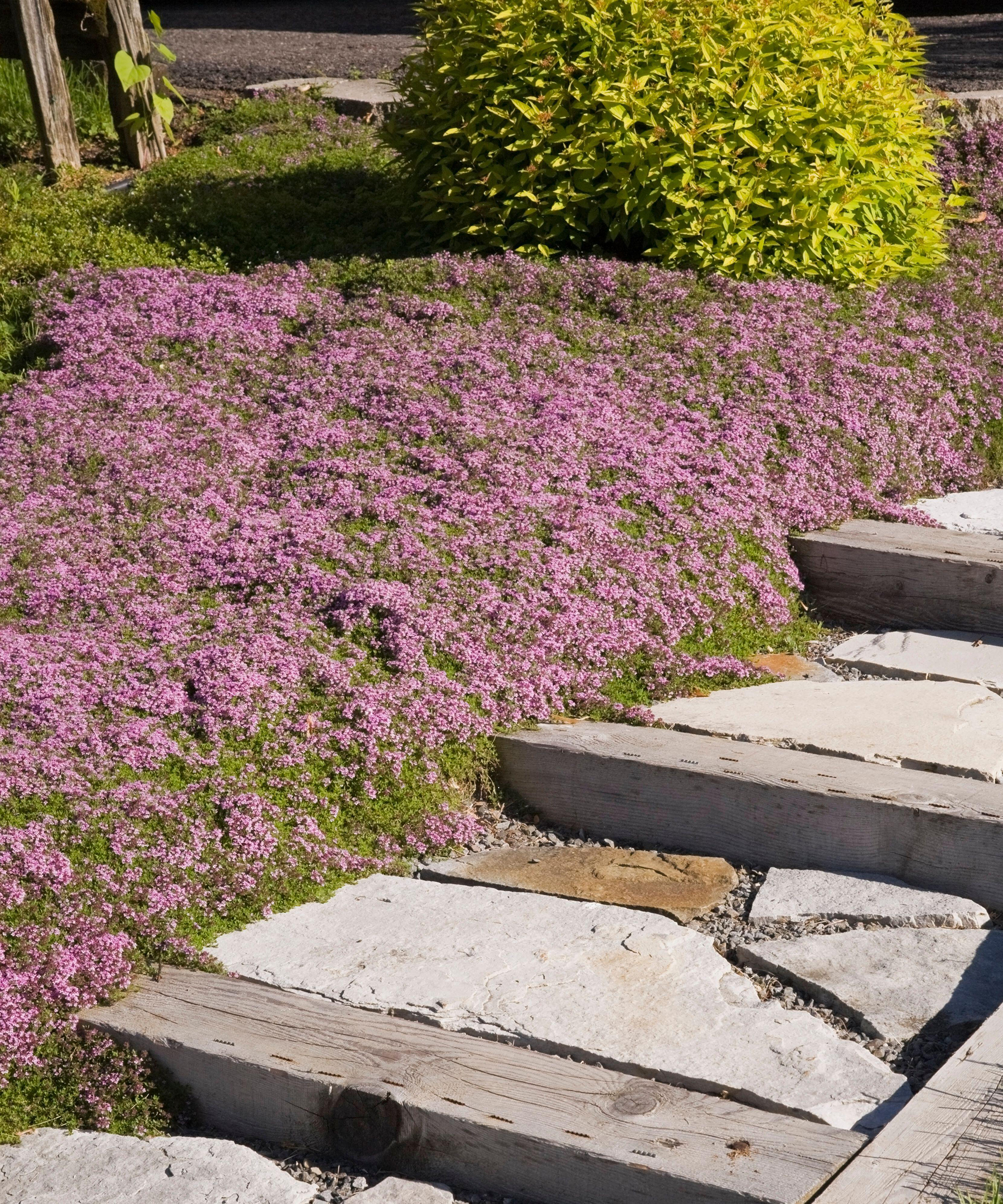
A lawn requires a lot of care to keep it looking good, and for such a small area is rarely worth the trouble. Consider swapping out your turf for a low-maintenance no-mow lawn of blue fescue, creeping thyme, chamomile, or white clover.
Alternatively, a gravel lawn looks modern and requires minimal maintenance. You can add container plants to it or intersperse graveled areas with low-maintenance plants. Bear in mind gravel gets hot in the high heat, so it is not ideal for warmer climates.
13. Plant a Four-Season Tree
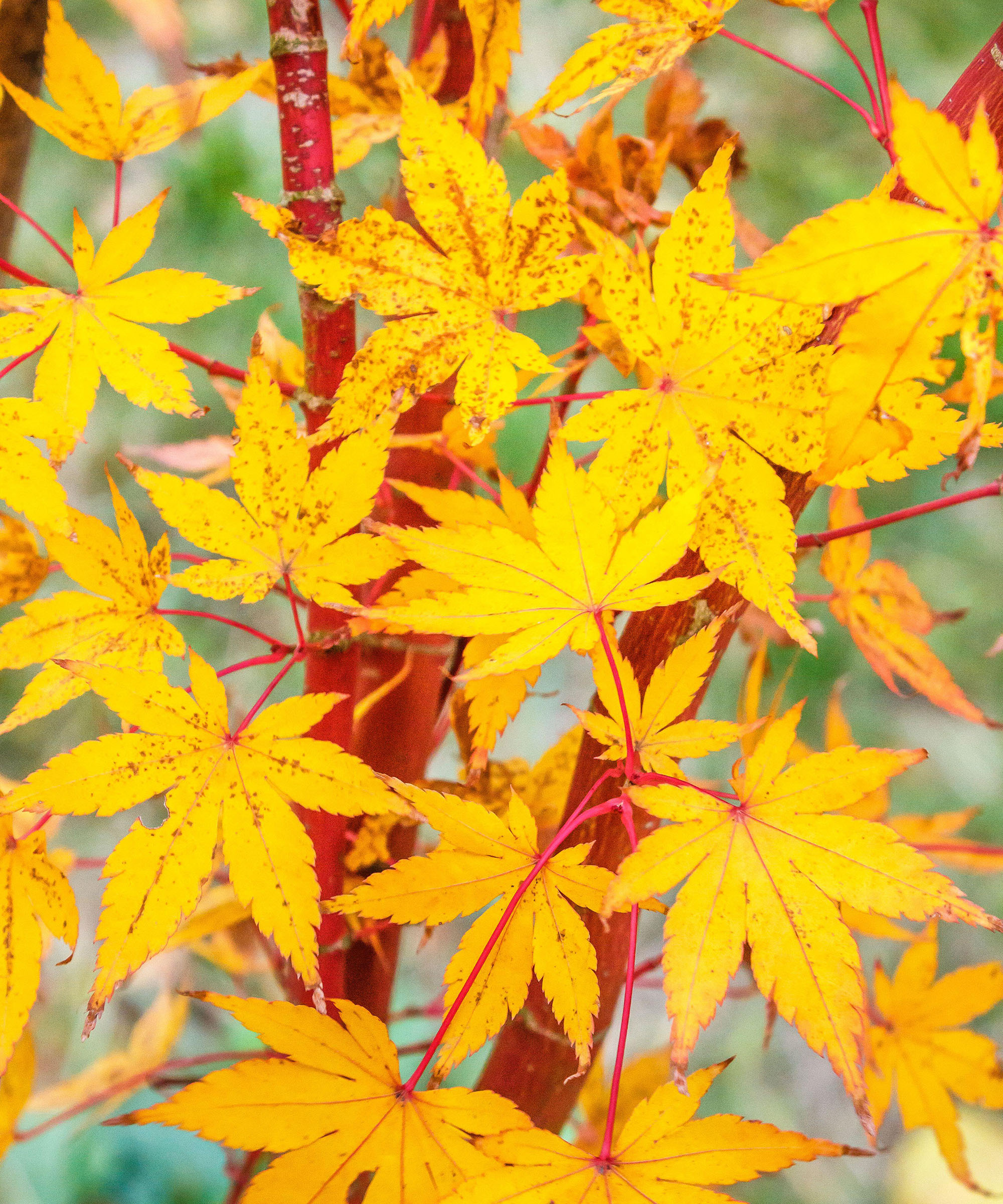
If you only have room for one tree, then you had better make it count. Four-season trees have beauty to offer every month for year-round curb appeal – from blossom in spring and delicious fruits in the summer, to colorful leaves in the fall, and berries or attractive bark in winter.
Depending on the size of your yard, choose a medium-sized tree such as seven son flower or Sargent cherry tree, or a dwarf variety of flowering dogwood or coral bark Japanese maple.
Before buying a tree, check both the mature height and canopy width.
14. Add Seating Out Front
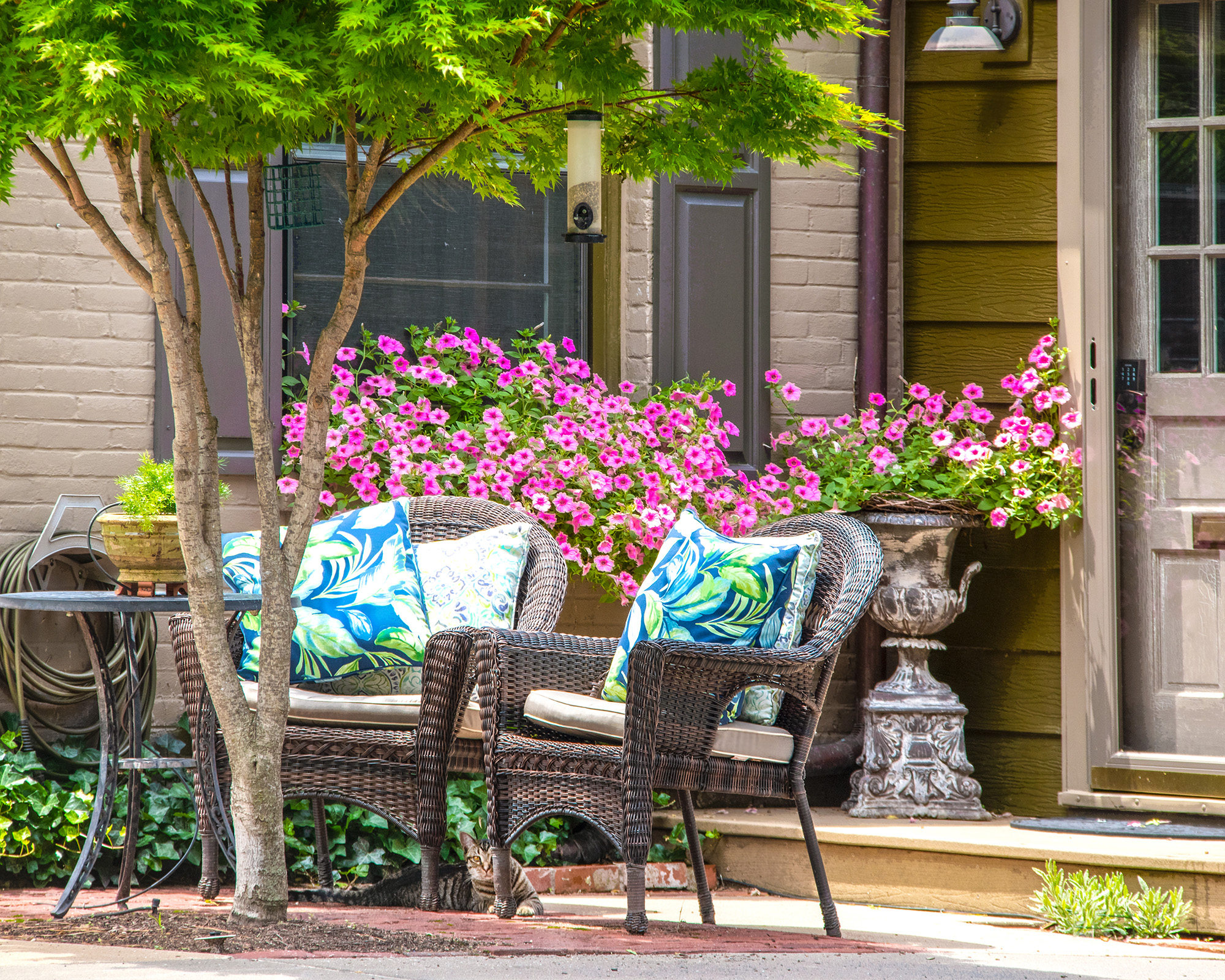
If you like to watch the world go by and socialize with neighbors, then a front yard seating area is key. Despite the limited area a well-chosen seating arrangement can maximize comfort and functionality in a small front yard.
Opt for compact, multi-purpose furniture, such as a small bench with built-in storage, or a pair of bistro chairs and a small table.
Positioning the seating near a focal point, like a flower bed or ornamental tree, enhances the ambiance, creating a cozy spot to unwind with a book or a cup of coffee.
Incorporating greenery, such as tall potted plants, climbing vines, or even a small tree, can enhance privacy, making the space feel more intimate and secluded while still being part of the neighborhood.
This article features products available from third-party vendors on the Gardening Know How Shop.

Melanie is an experienced gardener and has worked in homes and gardens media for over 20 years. She previously served as Editor on Period Living magazine, and worked for Homes & Gardens, Gardening Etc, Real Homes, and Homebuilding & Renovating. Melanie has spent the last few years transforming her own garden, which is constantly evolving as a work in progress. She is also a passionate organic home grower, having experimented with almost every type of vegetable at some point. In her home, Melanie tends to an extensive houseplant collection and is particularly fond of orchids.
-
 4 Superfast Composting Methods: Turn Waste Into Garden Gold In 30 Days Or Less
4 Superfast Composting Methods: Turn Waste Into Garden Gold In 30 Days Or LessTry the fastest composting methods to turbocharge your pile and transform kitchen scraps and garden waste into finished compost in just a few weeks.
By Mary Ellen Ellis
-
 Best Spider Plant Soil – Complete Soil Guide And Expert Tips For Keeping Plants Happy
Best Spider Plant Soil – Complete Soil Guide And Expert Tips For Keeping Plants HappySpider plants are fun and easy plants to grow, but what is the best soil for a spider plant? Selecting the right soil is important so they can thrive.
By Bonnie L. Grant